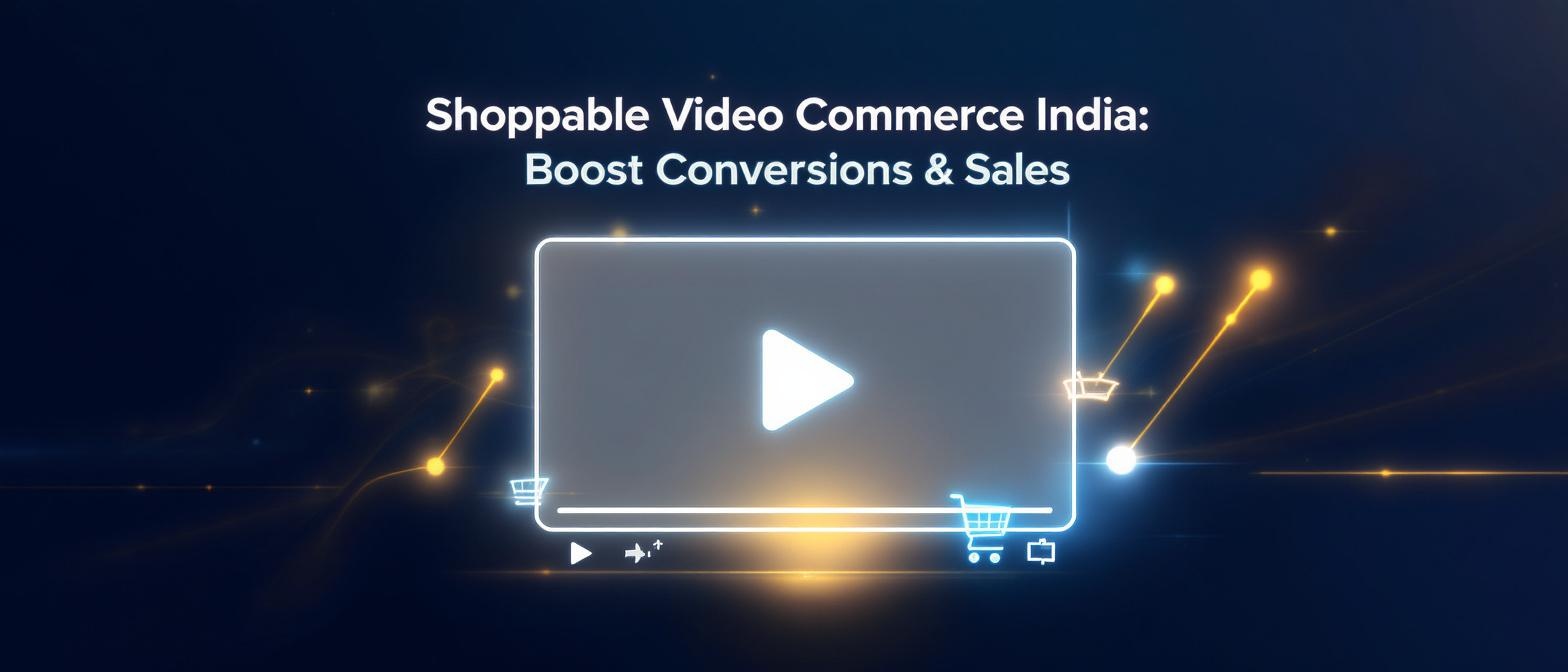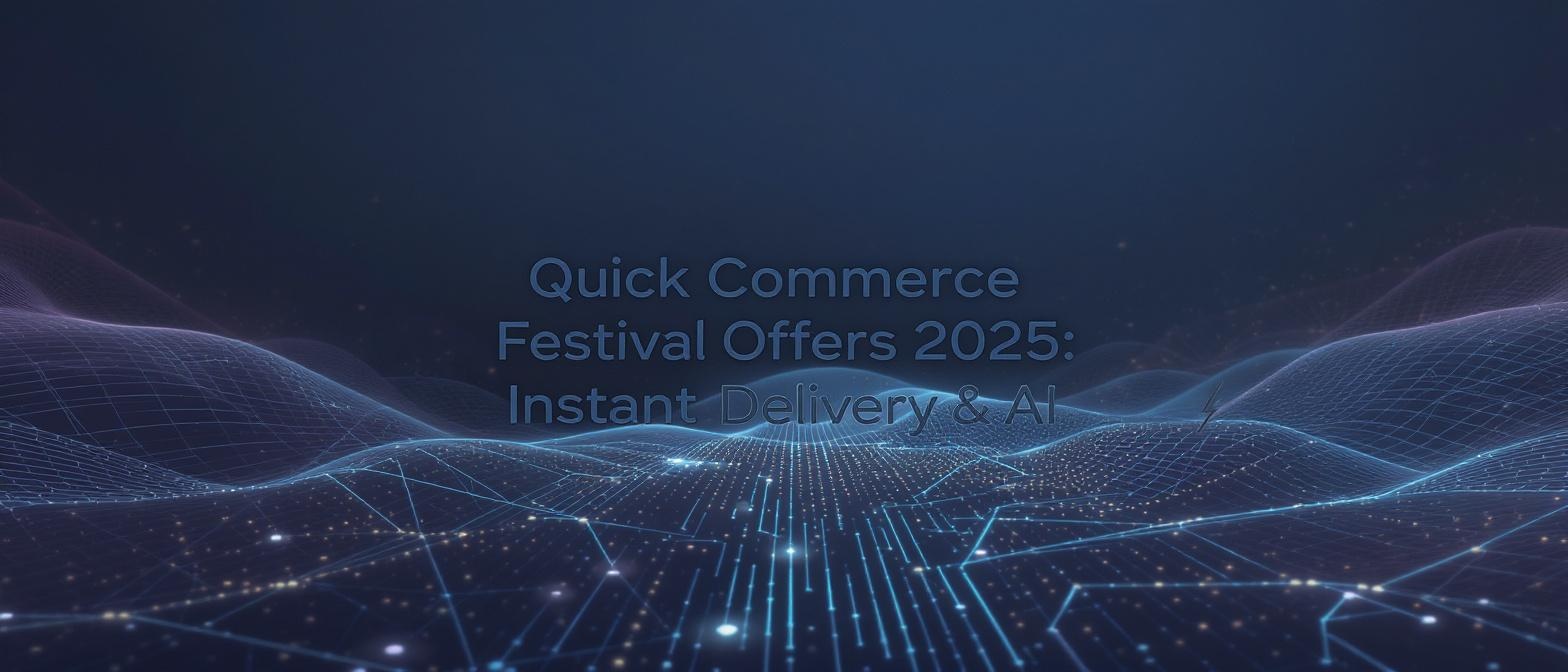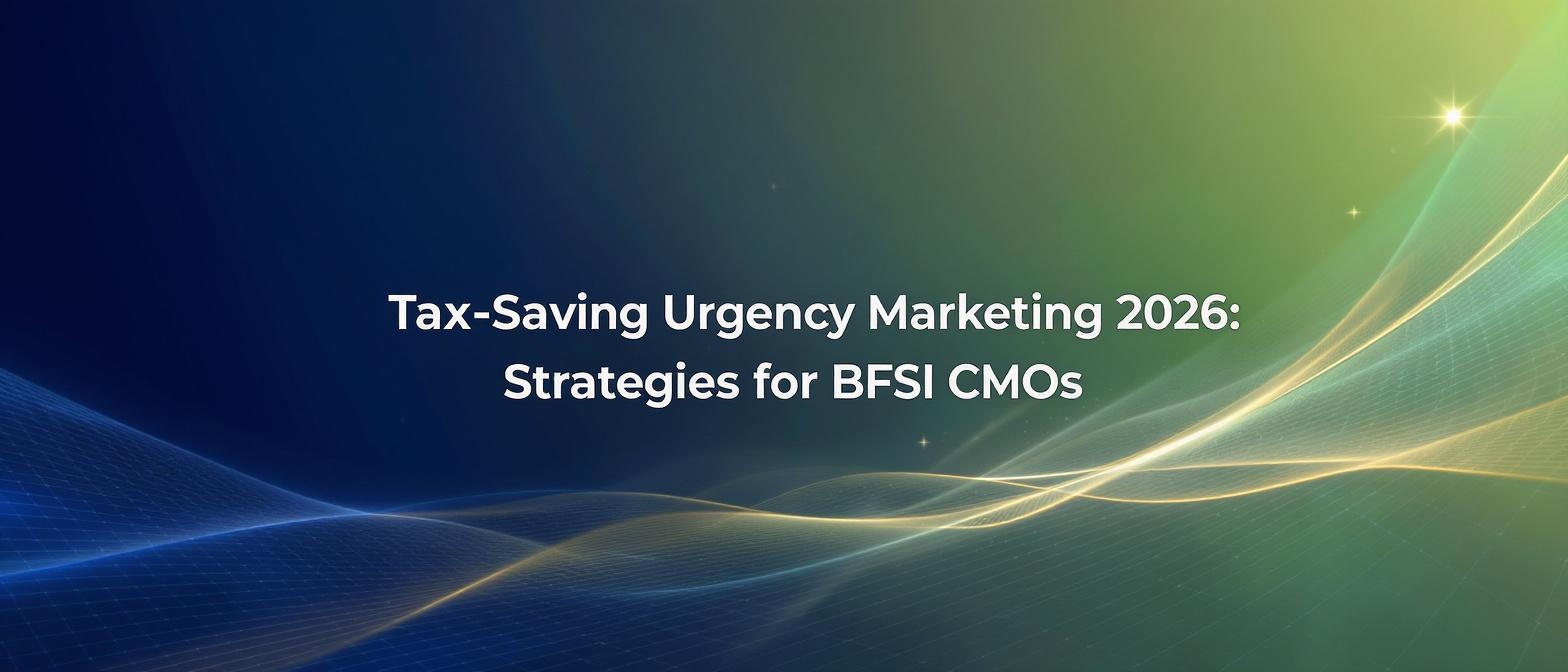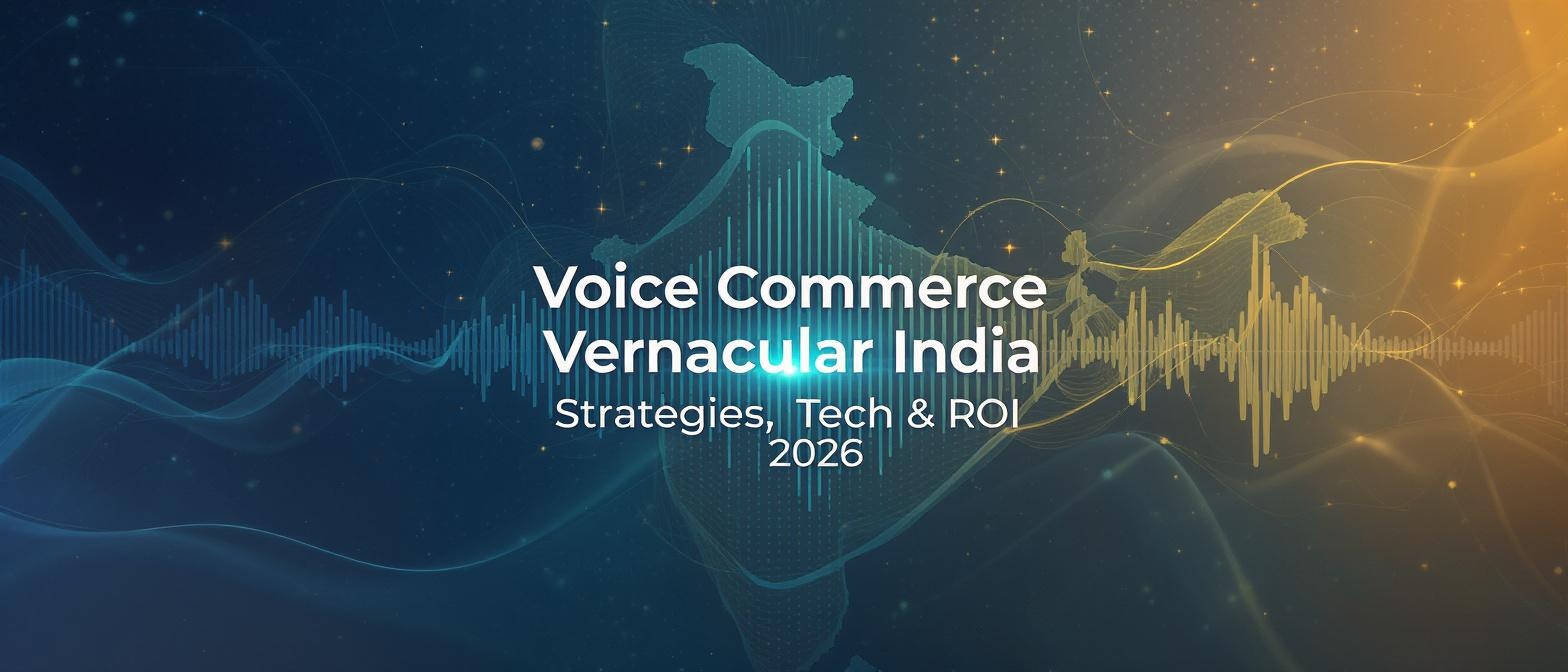Shoppable Video Commerce India: Unlocking the Future of E-Commerce
Estimated reading time: ~12 minutes
Key Takeaways
- Shoppable video commerce in India is driving massive conversion rates across industries.
- AI-powered personalization tailors products to individual consumer preferences.
- Live commerce events build urgency and community, amplifying engagement.
- Social platforms deeply integrate in-app shopping with video content.
- A data-driven strategy is crucial for iterating and optimizing ROI.
The digital marketplace in India is on the brink of a seismic shift. For e-commerce managers and Direct-to-Consumer (D2C) brand leaders, the challenge is no longer just about driving traffic but converting it in the most seamless, engaging way possible. This is where shoppable video commerce India emerges as a game-changing strategy. As mobile penetration deepens and data becomes more accessible, the Indian consumer’s appetite for video content has fused with their love for online shopping, creating a fertile ground for unprecedented growth. By 2025, video shopping trends are projected to drive up to 80% higher conversions on product pages, transforming passive viewing into active purchasing.
This comprehensive guide is designed for the forward-thinking e-commerce professional in India. We will dissect the mechanics, explore the explosive trends, unpack the technology, and provide a strategic blueprint to harness the power of interactive video. It’s time to move beyond static product images and traditional ads, and step into the immersive, high-conversion world of shoppable video.
What is Shoppable Video Commerce?
At its core, shoppable video commerce refers to interactive video experiences that allow viewers to browse, click, and purchase products directly within the video interface. Think of it as the ultimate convergence of content and commerce, eliminating the friction between discovery and checkout. Instead of watching a product video and then navigating to a separate page to buy, the purchase journey is embedded directly into the visual narrative.
This is not just about placing a “buy now” button at the end of a video. The mechanism is far more sophisticated and integrated, creating a fluid user experience across various touchpoints:
- Pop-up Product Overlays: As a product appears on screen, a clickable overlay can pop up with its name, price, and an “Add to Cart” button.
- In-Video Carts: Viewers can add multiple items to a shopping cart without ever leaving the video player, perfect for lookbooks or tutorials featuring several products.
- Clickable Hotspots: Specific areas of the video are made interactive. A viewer could click on a model’s handbag, shoes, or sunglasses to see product details instantly.
- Live Stream Shopping: During a live broadcast, hosts can showcase products, and links to purchase them appear in real-time for viewers to click and buy.
The Technology Behind the Magic
To the user, it feels seamless, but behind the scenes, a robust technical framework makes these interactive shopping videos India possible.
- Product SKU Mapping: Each product’s unique Stock Keeping Unit (SKU) is mapped to specific timestamps in the video. When the video reaches that timestamp, the corresponding product information is triggered to appear.
- Tagging and Metadata: The video file is enriched with a layer of metadata, including dynamic information like price and stock availability, pulled in real-time from the e-commerce store’s database.
- Event Tracking and Analytics: Event listeners track every interaction—from clicks on a product to the final purchase—providing granular insights into the video-to-purchase conversion funnel.
This technological backbone is what elevates a simple marketing video into a powerful, data-driven sales channel, making AI shoppable videos e-commerce a cornerstone of modern digital strategy.
The Unstoppable Rise: Current & Future Trends to 2025
The momentum behind shoppable video commerce in India isn’t just a fleeting trend; it’s a fundamental evolution in consumer behavior, supercharged by a mobile-first economy. The data paints a clear picture of a market ripe for this revolution.
Trend 1: Explosive Growth in Conversion Rates
The most compelling argument for adopting shoppable video is its staggering impact on the bottom line. According to industry projections, by 2025, landing pages that incorporate video commerce elements are expected to boost conversions by up to 80%. Furthermore, a global study by Firework reveals that businesses actively using shoppable video experience a 41% higher conversion rate on average compared to those that don’t. This isn’t a marginal improvement; it’s a significant competitive advantage.
Trend 2: The Surge of Live Commerce Video Shopping
Real-time, interactive, and authentic—live commerce video shopping is rapidly becoming a dominant force. Influencers and brand hosts are leading live shows, demonstrating products, answering questions, and creating a sense of urgency and community. This format merges the entertainment of a broadcast with the immediacy of a direct sales pitch. Platforms like Roposo have shown how effective this can be, especially in the fashion and beauty sectors. As per a MerchantSpring report, this trend is set to accelerate, becoming a mainstream channel for customer acquisition and sales in India by 2025.
Trend 3: Social Commerce Integration Becomes Mainstream
The line between social media and e-commerce has blurred into non-existence. Social commerce shoppable videos are no longer a novelty but a standard feature on platforms like Instagram, YouTube, and homegrown alternatives like Roposo. Brands are leveraging in-feed video posts, Stories, and Reels with integrated product tags and in-app checkout functionalities. This strategy meets consumers where they are, capturing impulse purchases and capitalizing on the trust established by creators and influencers. With the global social commerce market projected to hit $2.9 trillion by 2025, India’s massive and engaged social media user base will be a key driver of this growth.
Trend 4: Asia-Pacific and India Lead the Charge
The global adoption of video commerce is being led by the Asia-Pacific region, with India at its epicenter. A report from Market.us highlights that the region’s vast, mobile-first consumer base is driving the highest adoption rates worldwide. This isn’t just about the number of users; it’s about behavior. Indian consumers are more likely to discover, research, and purchase products entirely on their mobile devices, making video the most natural and effective medium to engage them.
The Engine Room: Technological Innovations Powering Shoppable Video
The rapid evolution of shoppable video is being fueled by powerful technological advancements, particularly in Artificial Intelligence. These innovations are making video commerce more scalable, personalized, and cost-effective than ever before.
AI-Driven Hyper-Personalization
The one-size-fits-all approach to marketing is dead. Modern consumers expect experiences tailored to their preferences. AI is the engine that makes this possible at scale. AI algorithms can analyze a viewer’s profile, past purchase history, and real-time browsing behavior to dynamically insert the most relevant product recommendations directly into the video they are watching. Two users watching the same brand video could be shown different products, drastically increasing the relevance and likelihood of a purchase. This level of personalization is a key component of the video marketing trends for 2025.
AI-Powered Content Creation and Localization
One of the biggest hurdles to creating video content for a diverse market like India is the cost and complexity of production and localization. Traditional video shoots are expensive and time-consuming. AI video commerce tools are dismantling these barriers. Studio by TrueFan AI enable brands to generate professional-grade videos in minutes, not weeks.
By leveraging cutting-edge technology, brands can achieve unparalleled scale and relevance. Key features revolutionizing the industry include:
- Photorealistic AI Avatars: A library of virtual humans, based on real influencers, can deliver any script with perfect lip-syncing.
- Instant Script-to-Video Generation: Type or paste a script, and the AI generates a complete video with professional voiceover and synchronized avatar.
- Massive Language Support: The challenge of catering to India’s linguistic diversity is immense. Studio by TrueFan AI’s 175+ language support allows a single video to be localized for different regions with one click.
- Seamless API Integration: Through APIs and webhooks, these platforms can connect directly to a brand’s product catalog, injecting product feeds and inventory data in real time.
This technology dramatically reduces production costs and timelines, democratizing video content creation for brands of all sizes.
See it in Action: Video Commerce Platforms & Examples in India
The theoretical benefits of shoppable video come to life through its practical implementation by leading platforms and brands in India. These examples showcase the tangible impact on engagement and sales.
Platform Spotlight: Flipkart Feed and Roposo Live
- Flipkart Feed: The e-commerce giant has deeply integrated short-form, shoppable video clips into its app experience. With built-in buy buttons and a seamless checkout, Flipkart has effectively turned content consumption into a direct path to purchase.
- Roposo Live: A pioneer in live commerce, Roposo hosts influencer-led shopping events. Viewers can purchase featured items with a single click, creating an exciting, interactive shopping festival environment.
Case Studies in Success: Tangible Results for Brands
The adoption of these platforms is yielding impressive, measurable results for D2C brands.
- Case Study 1: 40% Increase in Session Duration: A leading lifestyle brand integrated interactive video overlays on its product detail pages, increasing average user session duration by 40%. This directly correlated with a significant lift in add-to-cart rates.
- Case Study 2: 25% Uplift in Average Order Value (AOV): An apparel brand partnered with influencers on Roposo to host live commerce events, driving sales and achieving a 25% uplift in AOV. Bundling products encouraged customers to purchase complete looks.
These shoppable video examples India prove that the technology is not just hype; it’s a powerful tool delivering real business outcomes.
Your Strategic Blueprint: Building a D2C Video Commerce Strategy
Implementing a successful shoppable video strategy requires more than just technology; it demands a structured, data-driven approach. Here is a five-step blueprint for D2C brands in India to get started.
Step 1: Product & Story Mapping
Not every product is ideal for video. Start by selecting 3-5 hero SKUs that have strong visual appeal and a compelling story. Map out a clear narrative for each video. Focus on the problem the product solves and the emotional appeal of using it.
Step 2: Platform Integration and Technology Stack
Decide where your videos will live—on your PDPs, your app, or social commerce platforms. Ensure your e-commerce platform supports interactive video modules. This enables a seamless video-to-purchase conversion experience for your consumers.
Step 3: Influencer & Host Engagement
Authenticity is crucial. Partner with influencers or creators who align with your brand. For live commerce, train hosts to be engaging and knowledgeable. They can also use AI avatars to deliver scalable, localized content snippets that promote live shows.
Step 4: The Personalization Engine
Leverage AI for one-on-one consultation experiences. Implement real-time recommendation APIs to personalize shoppable videos based on user data. If a user frequently browses blue dresses, the video they see can emphasize blue dresses, increasing purchase likelihood.
Step 5: Performance Measurement and Optimization
Continuously test and refine your video elements. Experiment with video length, CTA placement, thumbnail styles, and hosts/avatars. Use analytics to track KPIs—clicks, conversions, and revenue—and let the data guide your optimizations.
Amplifying Your Reach: Social & Live Commerce Integration
A brilliant shoppable video is only effective if people see it. Integrating content into your social and live commerce channels extends reach and maximizes impact.
Weaving Commerce into the Social Fabric
Go beyond simply posting videos. Embed your social commerce shoppable videos where transactions can happen with minimal friction:
- Instagram & Facebook: Utilize product tags in Reels and Stories, and set up native storefronts for direct checkouts.
- WhatsApp: Share short product videos through WhatsApp catalogs and business messages. Use in-chat bots to provide instant demos and purchase links.
- YouTube: Tag products in your videos and live streams with YouTube Shopping, enabling direct shopping while viewers watch.
Mastering Live Commerce Events
Live commerce video shopping is event-based marketing at its finest:
- Schedule and Promote: Treat live events like product launches. Build anticipation across your channels.
- Engage and Interact: Use Q&As, polls, and shout-outs to create community engagement and loyalty.
- Measure What Matters: Track peak concurrent viewership, average watch time, and click-through rates on shoppable overlays to understand what resonates.
From Views to Value: Measuring Success & ROI
For any e-commerce strategy to be sustainable, it must demonstrate a clear return on investment. Measuring the success of your shoppable video campaigns goes beyond vanity metrics and focuses on bottom-line impact.
Key Metrics That Matter
Define KPIs before launch. Core metrics for shoppable video ROI India include:
- Video Conversion Rate (VCR): (Total Purchasers ÷ Total Unique Video Viewers) x 100.
- Engagement Rate: ((Total Clicks + Total Meaningful Interactions) ÷ Total Impressions) x 100.
- Click-Through Rate (CTR) on Overlays: Tracks interest in specific products featured in your videos.
- Revenue Lift: (Incremental Sales from Video ÷ Baseline Sales) x 100, attributing revenue impact directly.
Industry Benchmarks and Attribution
In India, the average shoppable video currently shows a 20-30% uplift in revenue per visitor on pages where it’s implemented, per Maxicus. Proper attribution is vital—use multi-touch models and UTM tags to track your campaigns from the first view to final purchase.
Additionally, solutions like Studio by TrueFan AI demonstrate ROI by significantly cutting production costs. Creating dozens of dynamic videos for the cost of a single traditional shoot drastically improves campaign profitability.
The Future is Now
The era of passive e-commerce is over. The evidence is overwhelming: shoppable video commerce India is not an experimental tactic but an essential engine for growth in 2025 and beyond. For D2C brands and e-commerce managers, ignoring this shift means leaving sales on the table and risking irrelevance. The fusion of content, community, and commerce is powered by video, and the time to invest is now.
Start small, measure everything, and scale what works. Pilot your first shoppable video campaign to unlock the potential of hyper-personalized engagement at scale.
Frequently Asked Questions
What is the ideal length for a shoppable video?
There is no single “perfect” length. Shorter videos (15-45 seconds) perform well on social feeds to capture quick attention, while longer (1-3 minutes) tutorials work on product detail pages where viewers have higher purchase intent. Test different lengths to see what resonates with your audience and platform.
How do I choose the right products for video commerce?
Focus on products that are visually appealing, have demonstrable features, or benefit from explanation. Fashion, electronics, home goods, and beauty are prime categories. Analyze sales data to identify your best-sellers and start with them to maximize ROI.
Can I use shoppable videos for B2B e-commerce?
Yes. Shoppable video is effective for B2B as well—particularly for detailed demos of complex machinery or software. Instead of an “Add to Cart” button, integrate “Request a Quote” or “Book a Demo” forms to streamline lead generation.
What are the legal considerations for using influencer content?
Always have a clear contract. Define usage rights for brand sites and advertising. Comply with advertising guidelines by disclosing sponsorships. Secure perpetual rights if you plan to reuse or syndicate the influencer’s video content long-term.
How can smaller D2C brands start with shoppable video on a budget?
Leverage user-generated content or AI-driven platforms. Tools like Studio by TrueFan AI allow you to create professional videos with AI avatars at a fraction of traditional production costs, making cutting-edge video commerce accessible for any budget.





